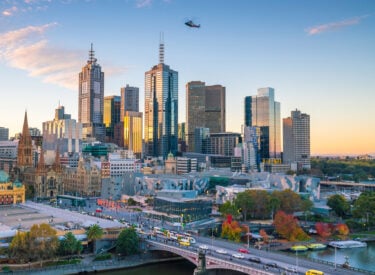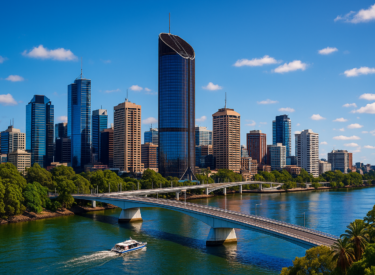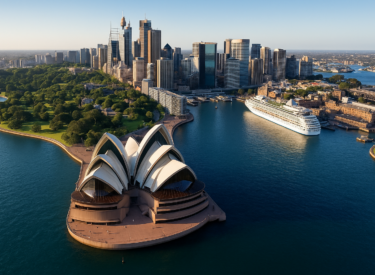
Key takeaways
Australia’s fertility rate has dropped to an all-time low of 1.5 children per woman, the lowest since 1935. This isn't a short-term trend but a significant demographic shift that impacts the economy and society long-term.
The high cost of living, housing unaffordability, and economic instability are key reasons why many young Australians are delaying or deciding against starting families. Childcare costs, career pressures, and urban housing challenges make parenthood financially daunting for many.
Fewer births today mean a smaller workforce in the future, creating a strain on government budgets. As the population ages, healthcare, aged care, and education demand will rise, while a shrinking workforce will contribute less tax revenue, complicating budget allocations and support systems.
Australia has traditionally relied on population growth, via births and migration, to fuel economic expansion. With falling birth rates, Australia may need to increase skilled migration to maintain workforce numbers, support economic demand, and offset the retiring baby boomer generation.
A shift in birth rates could influence housing demand, with fewer large family homes needed and a possible rise in demand for smaller apartments or multi-generational housing. Urban planning will need to adapt to these changing housing needs.
Addressing housing affordability, accessible childcare, and flexible work arrangements could encourage young Australians to start families. With housing costs being a key factor, policies to ease affordability could resonate with voters, especially during election cycles.
The “baby drought” signals a deeper societal shift, affecting everything from public resource allocation to economic growth models. Addressing housing and affordability challenges early could better equip Australia to handle its demographic evolution and sustain balanced growth for future generations.
Australia’s birth rate has plunged to an all-time low, marking a new chapter in the country’s demographic and economic story.
With a current fertility rate of just 1.5 children per woman, we’re witnessing the lowest birth rate since records began in 1935.
This isn’t just a blip on the radar – it’s a trend that carries big implications for the future of our society and economy.
So, what’s driving this “baby drought”?
High costs of living, unaffordable housing, and financial instability are the main culprits.
Many young Australians are finding it increasingly tough to buy a home, cover everyday expenses, and plan for a stable future. As a result, they’re postponing – or in some cases, forgoing – starting or expanding their families.

Why are birth rates falling?
We’ve seen a dramatic shift from the large families that were common just a few generations ago.
Today, high childcare costs, career pressures, housing affordability, and a skyrocketing cost of living mean that having multiple children has become a significant financial commitment.
Many young couples, particularly in urban centres where property prices are steepest, simply feel priced out of parenthood.
For a long time, Australia has leaned on population growth to fuel economic expansion.
Unlike other developed countries facing similar birth rate declines, our economic model has always banked on an increasing population – whether through births or migration – to keep demand high, fill jobs, and drive growth.
But as birth rates drop, we face a potential shift away from that model.

Fewer births today means fewer workers tomorrow
A lower birth rate today inevitably means a smaller workforce in the future.
This has direct consequences for our economy and public services.
With fewer young Australians entering the workforce, we’ll eventually have fewer taxpayers to support crucial services like healthcare, aged care, and education.
This shrinking tax base could put pressure on government budgets, leading to difficult decisions about where to allocate resources.
As the population ages, the need for support in healthcare and aged care will increase – just as the number of working-age Australians able to contribute tax revenue declines.
Countries such as Japan and Italy have been grappling with this reality for years, and their experience highlights the challenges that come with an ageing population.
We’ll need to prepare to balance supporting an ageing demographic with ensuring a robust workforce for the future.

Economic growth and population policy
A steady flow of new citizens and consumers has historically bolstered Australia’s economic growth.
Fewer births would challenge this, impacting industries reliant on domestic demand, from retail to housing.
While we can work to drive productivity and innovation, these measures take time, and we need to lay the groundwork now to future-proof our economy.
Of course, one immediate way to address this challenge is through immigration, which has long played a role in offsetting a lower birth rate.
In my mind, our government will have no choice but to increase levels of skilled migration to boost the workforce and replace ageing, retiring baby boomers.
Not only do we need workers, but our governments will need more taxpayers to support their increasing healthcare, pension and NDIS budgets.
There’s no doubt there will be ongoing complaints about the challenges of Australia’s high immigration levels, and our governments will need to balance the benefits of migration with the cost of sustaining infrastructure growth and public services.
Housing and urban planning implications
If fewer families are formed or families remain small, we may see significant changes in housing demand.
For decades, the demand for housing in Australia has been propelled by a growing population, and over the years we have kept building bigger and bigger houses, but a lower birth rate could alter the types of homes in demand.

We might see reduced demand for large family homes and increased interest in smaller apartments or multi-generational housing, where elderly family members and younger ones can live under one roof.
Investors will need to keep track of these demographic trends, and urban planning will need to change as the needs of our cities evolve.
Supporting young families: the key to reversing the trend?
Being an election year, I can see that housing affordability and the challenges experienced by young families are going to remain in the news.
Policies that address housing affordability, accessible childcare, and flexible work arrangements that could make a difference for young people considering having children are likely to be touted by various political parties.
With housing prices as one of the primary deterrents to family expansion, improving affordability would be an attractive vote catcher for young Australians who are feeling financially stretched.
Looking to the future
Australia’s “baby drought” isn’t just a fleeting trend – it’s a signal of deeper societal and economic shifts.
From potential strains on public resources to evolving housing needs and a different type of economic growth, the effects of a declining birth rate will shape Australia’s future.
The sooner we start addressing our housing challenges, the better prepared we’ll be to navigate this new demographic reality, ensuring that Australia remains a prosperous, balanced society for generations to come.














